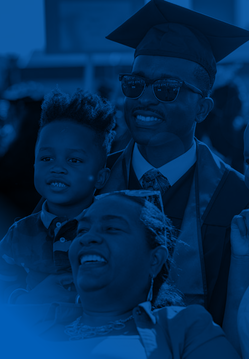A wide variety of programs, each with different requirements and limits, are available. One-Stop Specialists are able to answer your questions. Like all UMass Global employees, they follow the Federal Student Loan Code of Conduct, ensuring that students are treated fairly.
Federal Pell Grant
Pell Grants assist low-income undergraduate students without a baccalaureate degree. Students are limited to 12 full-time semesters of eligibility. This is a need-based grant that does not need to be repaid. Awards range from $380 to $7,395. To apply, submit your FAFSA and contact your One-Stop Specialist.
Federal Supplemental Education Opportunity Grant
Supplemental Education Opportunity Grants assist low-income undergraduate students without baccalaureate degrees. This is a need-based grant that does not need to be repaid. The award amount is up to $450. To apply, submit your FAFSA and contact your One-Stop Specialist.
Federal TEACH Grant
The TEACH Grant Program provides grants of up to $4,000 a year to students who are completing or plan to complete course work needed to begin a career in teaching. For more information go to: https://studentaid.gov/understand-aid/types/grants/teach
Apply for the TEACH Grant
William D. Ford Federal Direct Loans
The U.S. Department of Education offers low-interest loans to eligible students to help cover the cost of college. Direct Loans are borrowed through the federal government and must be repaid. To apply for any type of Direct Loan, you must first complete and submit the Free Application for Federal Student Aid (FAFSA). We will use the information from your FAFSA to determine how much student aid you are eligible to receive. Direct Loans are generally included as part of your financial aid proposal. There are three types of Federal Direct Loans for undergraduate students – Subsidized, Unsubsidized, and Parent PLUS.
Direct Subsidized Loans:
- Only available to undergraduate students with financial need.
- The amount may not exceed your financial need and is limited by your grade level in school.
- The U.S. Department of Education pays the interest on a Direct Subsidized Loan while you’re in school at least half-time, or for the first six months after you leave school (referred to as a grace period) and during a period of deferment (a postponement of loan payments).
Direct Unsubsidized Loans:
- Available to undergraduate and graduate students — no requirement to demonstrate financial need.
- Award amount is based on your cost of attendance and other financial aid you receive.
- You are responsible for paying the interest on a Direct Unsubsidized Loan during all periods.
- If you choose not to pay the interest while you are in school, your interest will accumulate and be added to the principal amount of your loan.
Direct Parent PLUS Loans
PLUS loans are federal loans that parents of dependent undergraduate students can use to help pay education expenses. The U.S. Department of Education makes Direct PLUS Loans to eligible borrowers through schools participating in the Direct Loan Program.
- The U.S. Department of Education is the lender.
- The borrower must not have an adverse credit history.
- The maximum loan amount is the student’s cost of attendance (determined by the school) minus any other financial aid received.
- If a parent borrower is unable to secure a PLUS loan, the undergraduate dependent student may be eligible for additional unsubsidized loans to help pay for his or her education.
- For more information and instructions on how to apply, visit: https://studentaid.gov/plus-app/parent/landing


